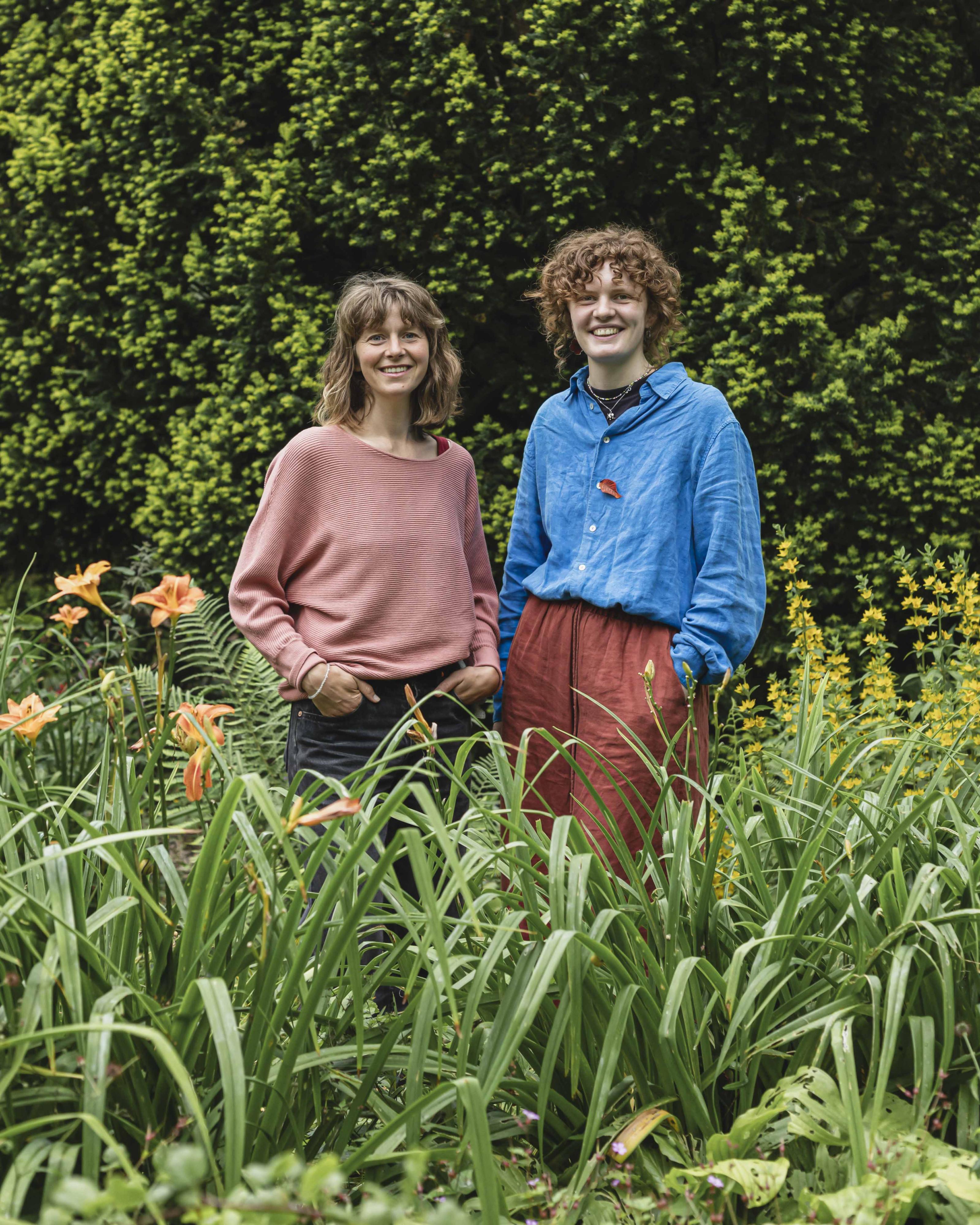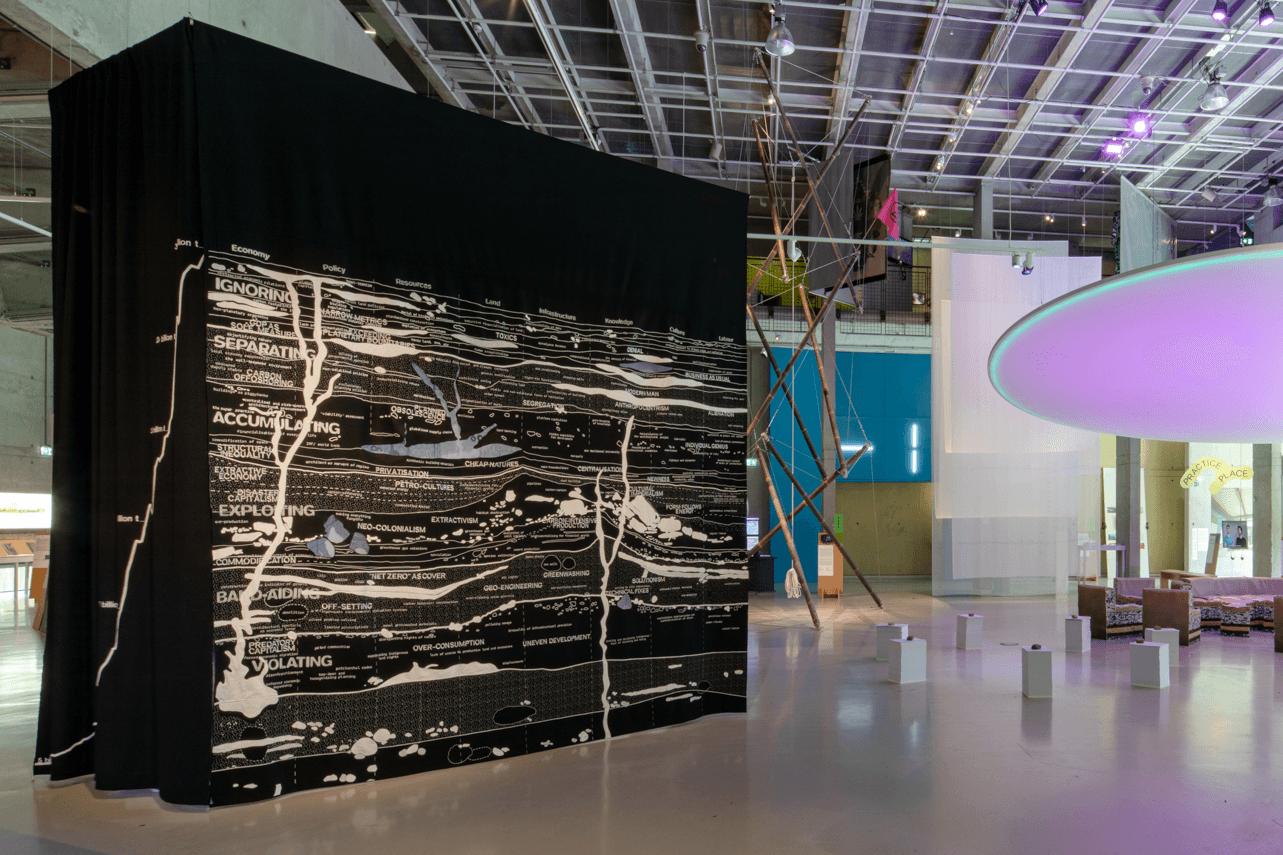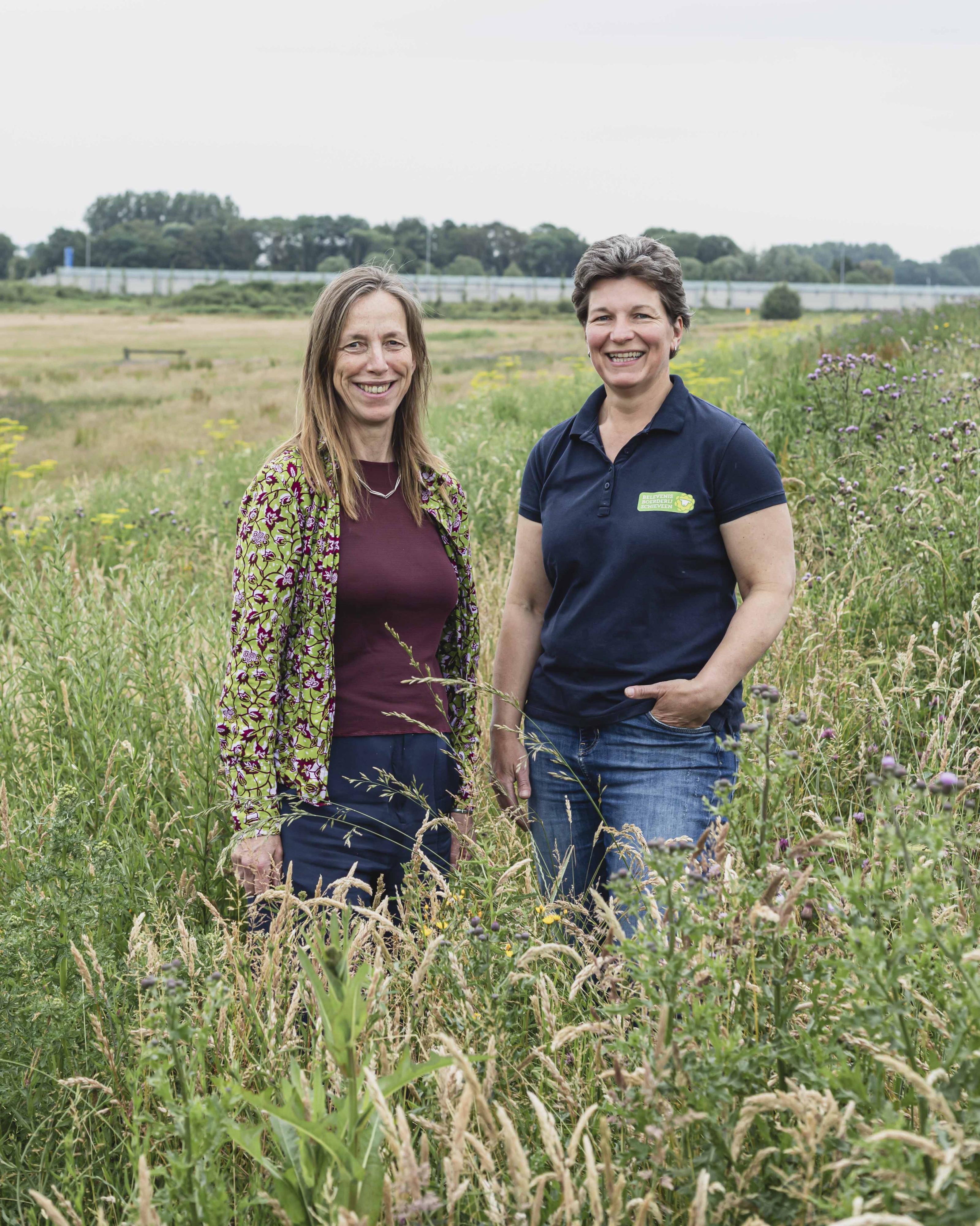Who builds towards a green future on a daily basis? To show how big ideas and visions find their way into reality, "Botanical Monuments" is part of this edition of the biennial: a collection of Rotterdams community initiatives around urban nature. They represent the ambition of the IABR to change the relationship between architecture and nature. But how does this ambition come to life in and around the city, who are the people behind big visions and what can we learn from them? Sabine and Jocelyn create the series "Hope Sowers" and engage with those taking steps towards an architecture that, in collaboration with nature, builds for future generations.
During our journey along the Botanical Monuments route, we explored one of Rotterdam's food forests. A food forest is a garden or semi-open forest that functions as a natural ecosystem producing a wide variety of fruits, nuts, and edible leaves and flowers by harnessing the ecological principles of a natural forest. We speak with Clara and Renée, caretakers of one of the largest food forests in Rotterdam: Voedselbos de Overtuin, located in the botanical garden Trompenburg Tuinen & Arboretum. With a special collection of trees and many exotic plants, this historic estate is rich in stories, species, and methods of green management. Six years ago, the food forest was planted by an enthusiastic group of volunteers. Currently, the forest is managed by volunteers under the leadership of the duo, bound by a shared interest in biodiversity and what it means to be human in the hustle and bustle of the city.
“Renée and I started as caretakers and volunteers at Voedselbos de Overtuin. Through the years, we discovered so much beauty about nature that we want to share,” Clara explains. “That's why we thought about how we could activate this place.” They now guide the volunteer group and organize various activities, such as tours, educational lessons for schools, workshops for groups, and harvest dinners. “De Overtuin is a magically green place, as if you're not in the city. It's a young food forest and therefore an experimental and educational place. We also learn a lot from the management and apply that knowledge in our lessons. It's beautiful to see how every visitor is surprised by the contrast with the urban environment,” Renée adds. “Every corner of the garden has a new surprise: a leaf with a spicy wasabi flavor, a berry with a sour drip, or a colorful edible flower.”
Clara and Renée want to show how to build a relationship with nature, especially in a dynamic city like Rotterdam. By strengthening this relationship, they hope people will also take better care of their natural surroundings at home. “If we dream big, we'd love to see every green space in the city designed as a place to pick, sow, and harvest. Yet, the green spaces of Rotterdam are managed with functionality, safety, and aesthetics in mind. You can walk through them, and that's it,” Clara explains. “A good example is that fruit trees are not allowed in the city because they cause mess with their fruits. These are precisely the types of trees that could allow Rotterdammers to pick their own food, but the city prefers nature that looks nice and is easy to manage. As a result, people miss the chance to build a relationship with nature. It simply cannot be done.”
Trompenburg, with Voedselbos De Overtuin, can offer a counterpoint by creating a place where people can learn about greenery from a different perspective. Therefore, the focus is now more on education than on large-scale production. “Special crops are taken by local restaurants. For example, in spring, a lot of wild garlic grows here, a plant that wild animals such as badgers eat after their hibernation. It's a very tasty plant and is therefore popular among top chefs in the city.” But above all, Voedselbos De Overtuin is an inspiring place where people can learn to build a relationship with plants. “The dream is to show as many people as possible, young and old, how you can look at nature differently and how you can use it in everyday life as a city dweller,” says Renée. Curious about Voedselbos De Overtuin? Click here for their spot on the Botanical Monuments route. Opening hours, activities, and more information can be found here.




